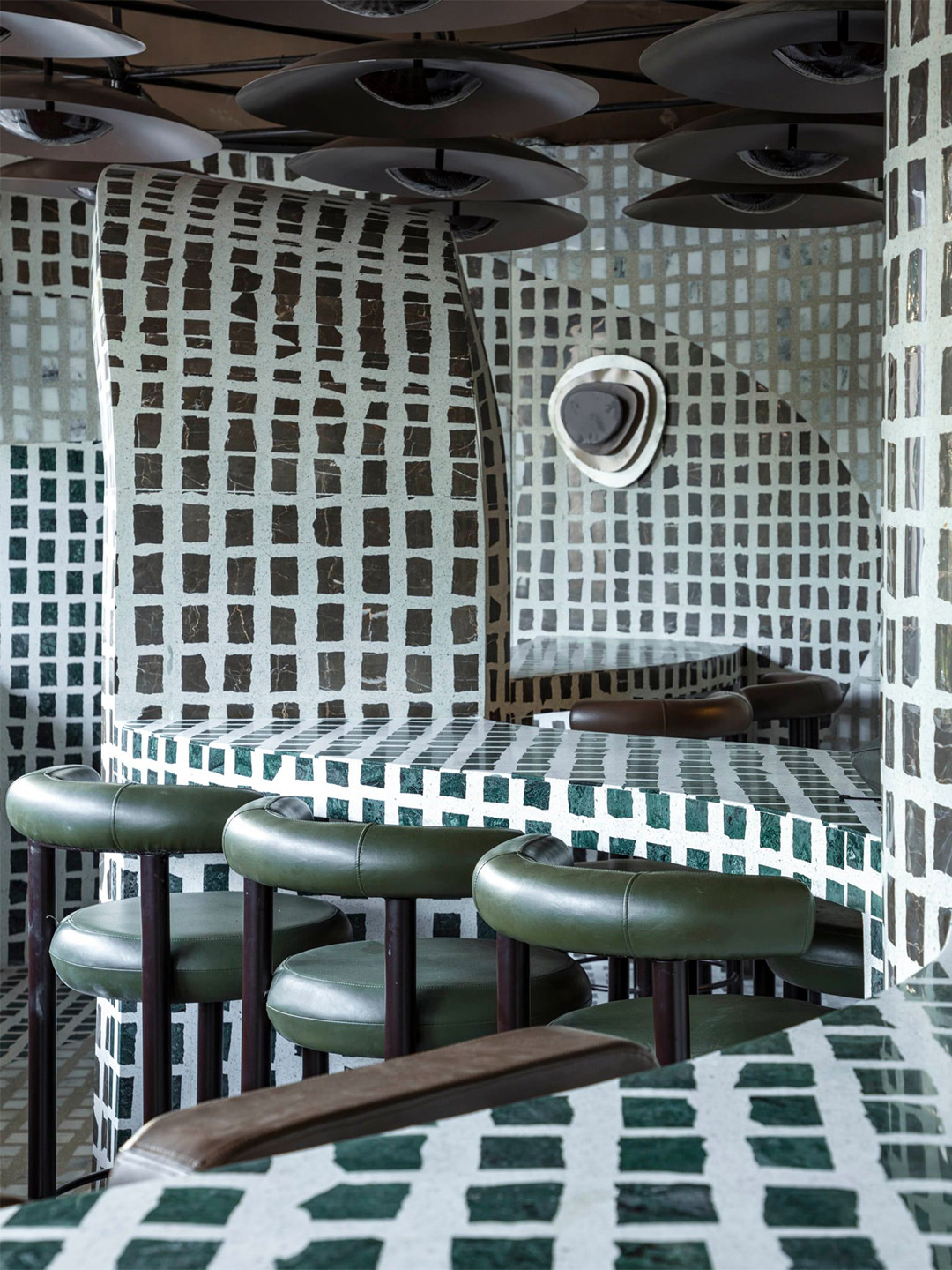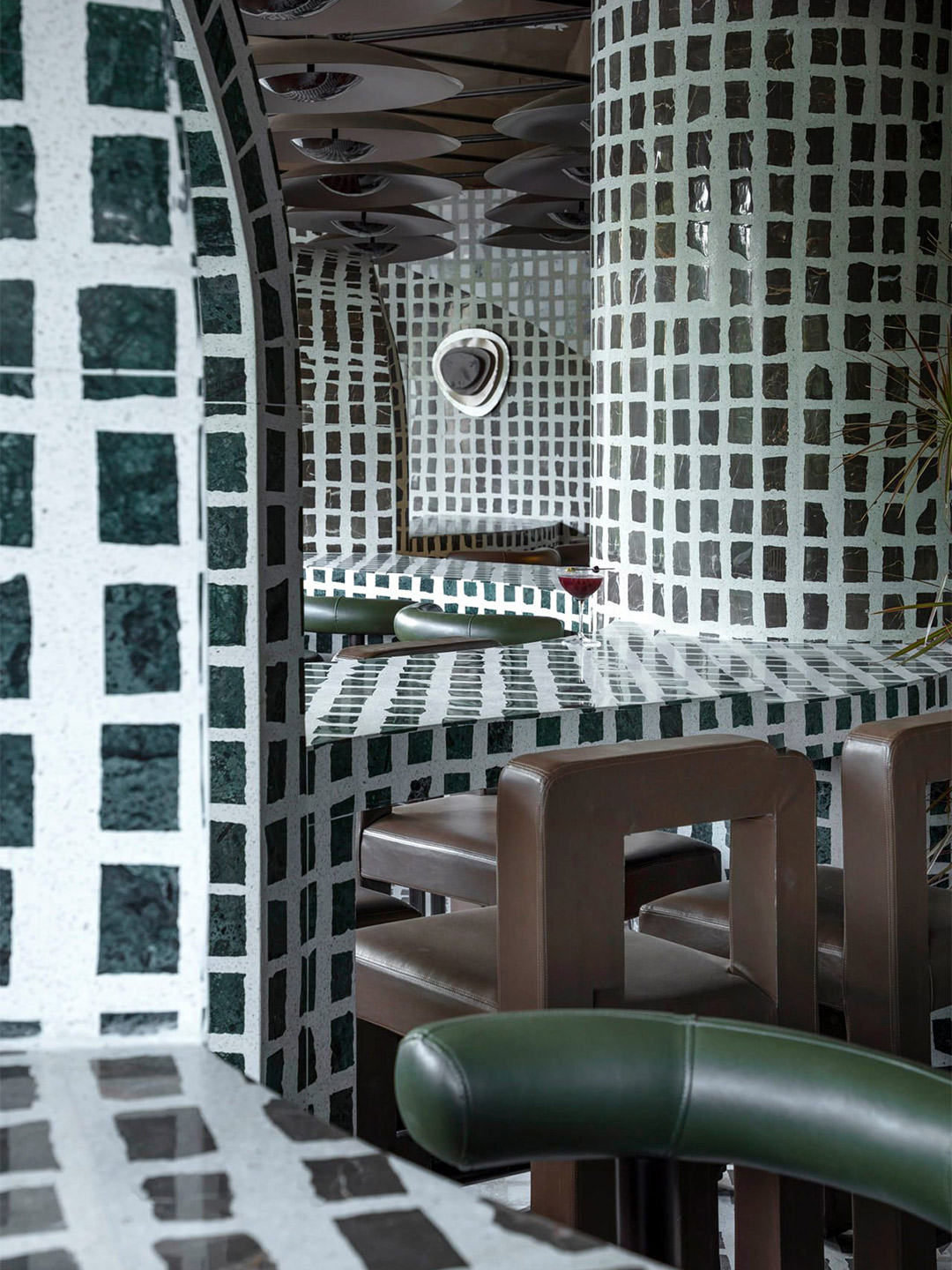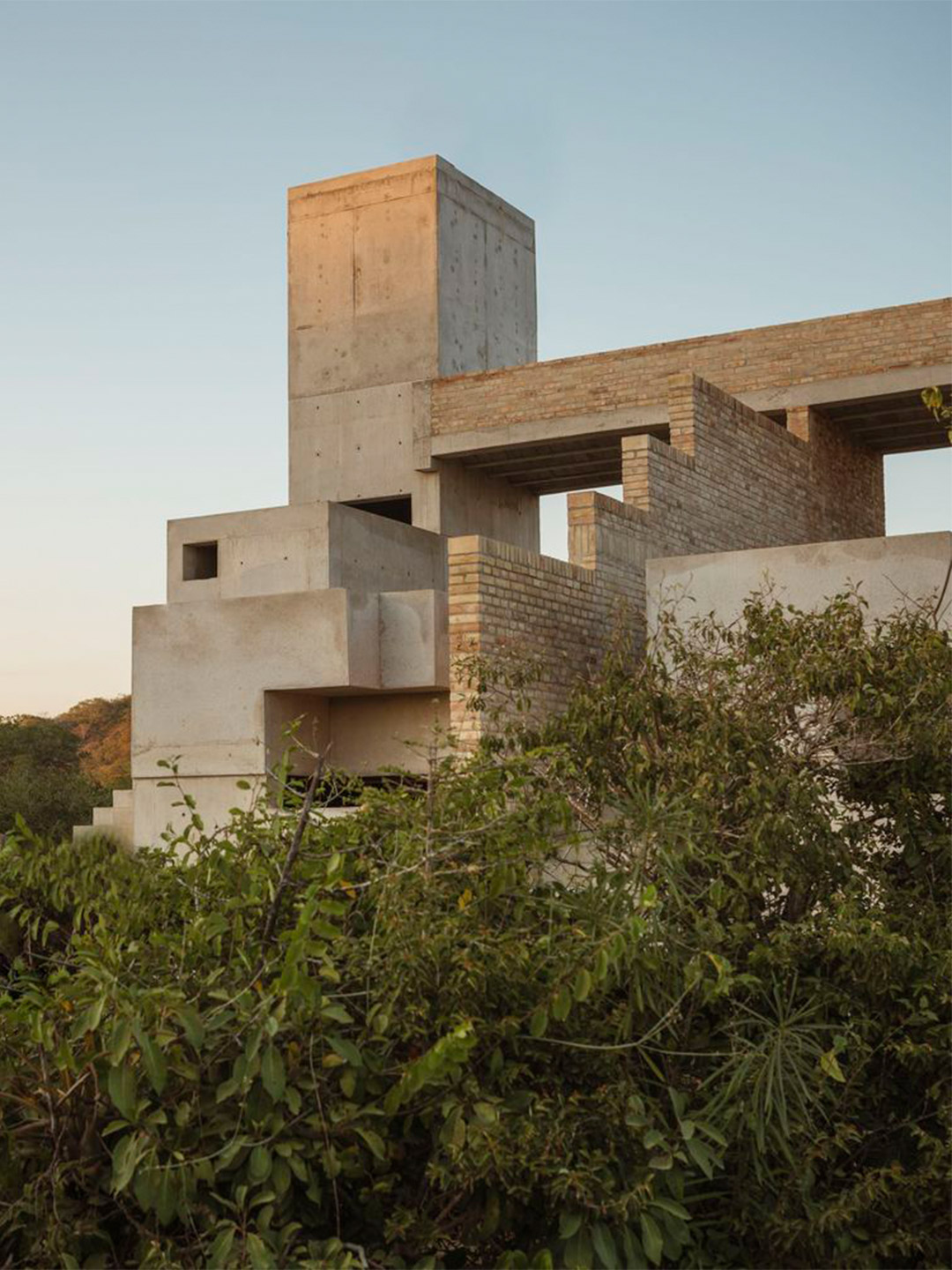This pan-Asian dining venue in the centre of effervescent Chandigarh, Punjab, India, is described by its designers as an “undisputed cauldron of minimalism and indigenous materiality”. Emblazoned with the name Tin Tin, the restaurant, crafted by local architecture firm Renesa, unapologetically dives head-first into the realm of experimental design, an impetus that’s equally expressed through the venue’s gastronomical offerings.
With unconventionality resting at the heart of Tin Tin, the spin-off from its glaring commitment to materiality is an experience that engages the senses beyond expectation. The Renesa team focussed on crafting “a sense of Zen,” they insist, while at the same time they leant into the sensibilities of local Indian materiality to bring the wow factor. The venue walks the line between novelty and experiential dining, casting light on inventive practises that thoroughly explore Indian craftsmanship.


Tin Tin restaurant in India by Renesa Architecture
Tin Tin’s grotto-like feel comes from the stippled appearance of cast-on-site slivers of Indian stone and terrazzo that were painstakingly hand-laid over six months by a brigade of local stonemasons and casters. The deep shades of jade, umber brown, veined white, and “greige” bespeckle the space, casting a different mood in each pocket of the sprawling diner. The absence of rigid linear forms creates intimate nooks and organic “caves” that cocoon diners in an engaging embrace.
Revelling in the colour palette established by the surfaces, the restaurant’s furniture submits to curvilinear silhouettes that stitch organically into the varied space. “No two sights within the interior volume are identical,” the architects declare, referencing the spatial tapestry that unashamedly lures in its patrons. It’s a place almost purely guided by a sense of mystery and curiosity, where a medley of sweeping arches and contoured ceilings tempts diners on a journey of discovery.
With a variety of sitting areas on offer, from standalone high tables with stools to snaking communal counters, Tin Tin seamlessly transitions from a fine-dining space by day to a high-octane lounge at dusk. The combination of privacy, electric energy, cuisine and community operates hand-in-hand with its maze-like qualities, summoning “a tangible ambience doused in mystique,” the architects conclude.



The absence of rigid linear forms creates intimate nooks and organic “caves” that cocoon diners in an engaging embrace.







Catch up on more architecture, art and design highlights. Plus, subscribe to receive the Daily Architecture News e-letter direct to your inbox.








